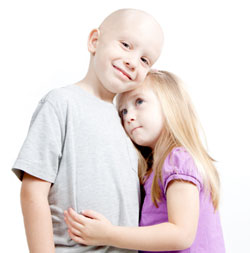BRIGADES FOR CHILDRENS:
Laboratory services and programs brigades with the consent offered and involving parents to support children and adolescents to detect anemias, childhood obesity, suspected leukemias, as well as laboratory studies in general to support children .
Blood tests are the first tests done to detect leukemia. Usually, blood samples are taken from a vein in the arm, although in infants and young children, can be taken from other veins. The tests done on these samples are usually blood counts and blood smears. a complete blood count or complete blood count (complete blood count, CBC) to determine the number of blood cells of each type present in blood is made. A blood smear is the spread of a small blood sample on a glass slide and observing it with a microscope. Abnormal numbers of blood cells and changes in the way these cells look may make the doctor suspect leukemia.

«Of every 10 children who get to suffer some form of leukemia, seven cured by early detection»

«Leukemia leads to an uncontrolled increase in the number of white blood cells.»
Most children with leukemia have too many white and not enough red blood cells or platelets enough. Many of the white blood cells are blasts, a type of primitive cells that are normally found only in bone marrow. Although these findings may cause a doctor suspects that a child has leukemia, the presence of the disease, generally can not be diagnosed with certainty without observing a sample of cells from the bone marrow that will be requested by your doctor and practiced in a hospital.
